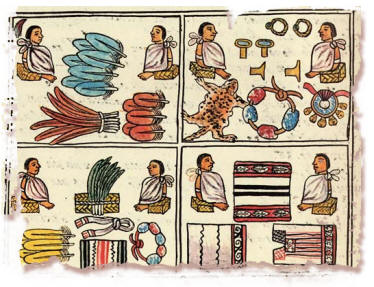
PUMPKIN (Ayotl). Practically no part of this wonderful plant was wasted by the ancient Mexicas. The flower, wonderfully colored going from green to orange, was cooked to accompany meats. Its seeds or pips were used in other dishes made with chile, and the fruit was cooked or prepared in piloncillo brown sugar or “candied”, particularly in the month of November for the Day of the Dead offerings.
![]()
CHAYOTE (Chayotli). The prickly fruit of the chayotera, is juicy and has a delicate, almost sweet flavor. Seeding yields an annual crop for seven years, and there are no known pests or diseases that affect it. It is used for both sweet and savory dishes. In Guanajuato, for example, it’s cooked with raisins, sugar, cinnamon and butter. In other Mexican towns, it’s eaten cooked with salt and topped with cream or cheese.
Virtually every pre-Columbian culture had its own name for the chayote. For example, in Michoacan, theTarascan called it apopu, in the San Luis Potosi Huasteca it was called cal-mishi, in Hidalgo, the Otomi called it shamu and in Chiapas, it was known as huisquil … In herbal medicine, the cooked leaves are used as a natural remedy for arteriosclerosis.
![]()
ZAPOTE (Zapotlan). Of a soft, red, paste-like consistency, aromatic and with an intense flavor, so is thezapote or sapodilla pulp, the fruit of a tall tree that grows in America’s tropical lands. In Mexico, there are many varieties of sapodilla and the Aztecs gave each of them a name: cochiztzapotl “the one which causes sleep”, cuztzapotl “Yellow zapote” , tlilzapotl “Black zapote”, or tetzonztapotl “mamey”.
One of Mexico’s most famous worldwide contributions, chictli or chewing gum, is also obtained from theSapodilla tree.


